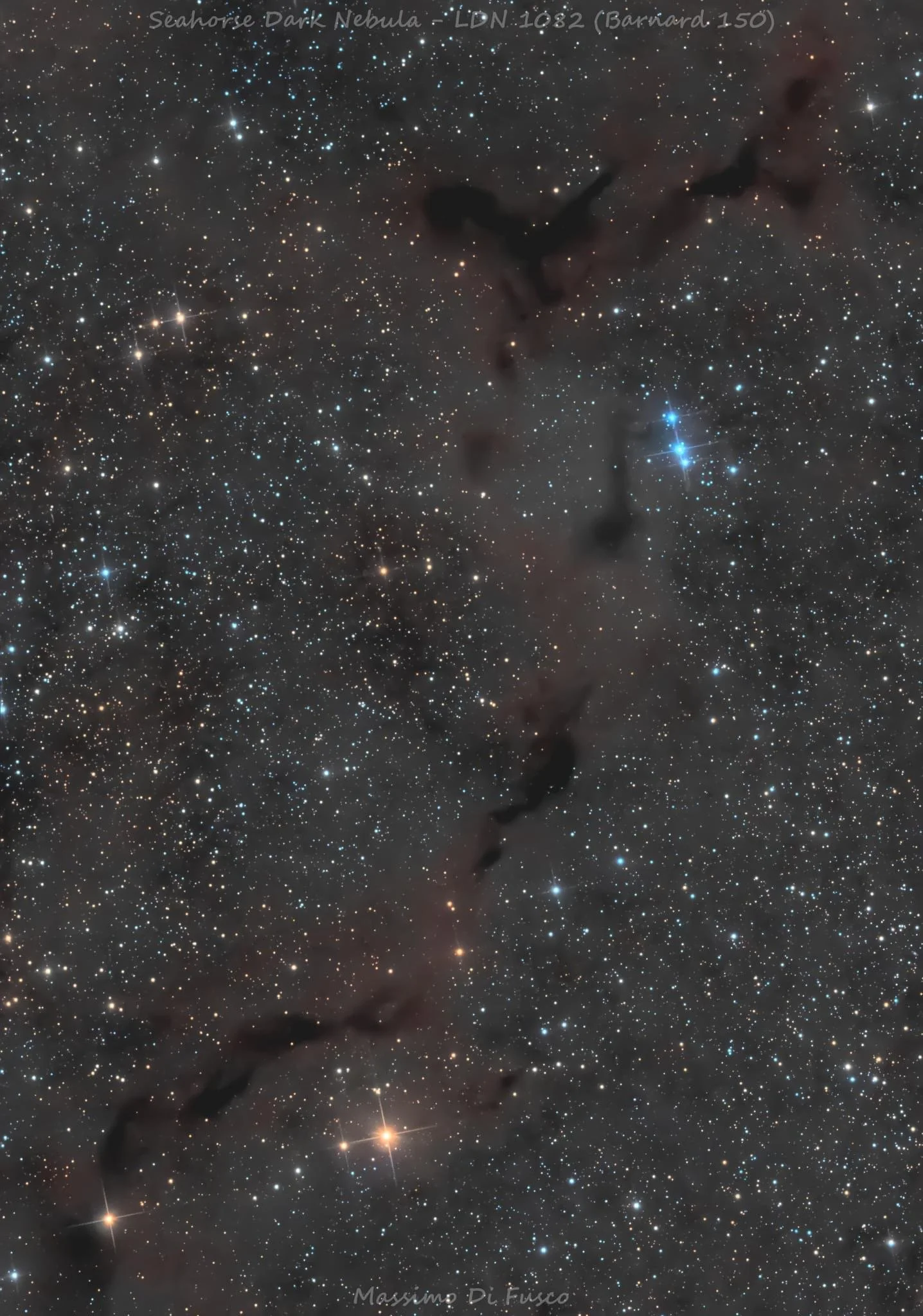
AAPOD2 Image Archives
Sort 2025 By Month: January | February | March | April | May | June | July | August | September | October | November | December
THE SUN FROM TEXAS
Solar photography is both art and science, capturing stunning images of the Sun, like in this wonderful example, allows photographers and astronomers to document solar phenomena such as sunspots, solar flares, and the ethereal beauty of nearest star.
Ldn1082
LDN 1082 or Barnard 150, also known as Seahorse Nebula because of its striking appearance, is an extended, elongated dark molecular cloud of dust in Cepheus constellation, so thick, that it absorbs all the light that comes from the stars behind it. This molecular cloud is part of our Milky Way galaxy, one of the 182 objects cataloged by astronomer Edward E. Barnard and it lies at about 1200 Llight -years away. Cloud location on the Milky Way's plane, makes it stand out on the background completely filled with colorful stars of any age and size.
This nebula is about 1 degree in size, width of two Moons. What is also interesting about this cloud, as it have 3 highly dense dust cores, which actually is a star formation regions. They were cataloged by Lynds and named LDN 1082 A, B and C.
Because the molecular cloud is only illuminated from behind by starlight, it is a major challenge for astrophotographers to process the dark dust on a dark background. To make things easier, nebulae of this type require very dark skies, so I was skeptical about the success of the photo from a polluted city sky (Bortle 7, SQM 19). The result surprised me quite a bit, also considering that this nebula is still low in this period.
Konus 200/1000 @960mm, f/4.8
Qhy168c @-20 °C
Sky-Watcher Eq6r Pro mount
SvBony CLS filter 379x180"
N.I.N.A., DSS, APP, PixInsight, PS
Copyright: Massimo Di Fusco




